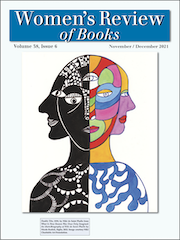We are pleased to announce the relaunch of Women’s Review of Books in early 2026.
The new editorial email contact is: nyuad.wrb@nyu.edu
WRB Home · Issue Contents · Editorial Board
Contributor Notes · Recommend · Subscription Info
WRB Ad Rates · WRB Advertising Contact
Women’s Review of Books
Editor-in-Chief:
ISSN: 0738-1433 (print)
ISSN: 1949-0410 (online)
32 pages/issue · 10.5″ x 14″
Issue Coverage: Volume 23 (2006) – Present
Women’s Review of Books has provided a forum for serious, informed discussion of new writing by and about women since 1983. Women’s Review of Books provides a unique perspective on today’s literary landscape and features essays and in-depth reviews of new books by and about women. Women’s Review of Books is published by NYU / Abu Dhabi, in collaboration with Old City Publishing in Philadelphia, PA.
Aims and Scope
Women’s Review of Books (WRB) began publishing in October 1983, with a goal of spreading the news about the scholarship emerging from the then new field of women’s studies and about creative writing—fiction, memoir, poetry—that examined women’s experiences. At the time, it was just about possible for WRB to cover every book that fit under these broad guidelines; and it was not always easy for those interested in such writings to track them down. Mainstream book review publications, newspapers, and even scholarly journals did not cover them; a network of women’s and gay bookstores was just emerging; and of course there was no Internet. Feminist and gay publications came and went and often did not devote much space to book reviews. WRB became essential reading for feminists.
Mission
- To give writing by feminist scholars and creative writers the serious critical attention it deserves.
- To promote women’s critical writing.
- To act as a bridge between feminist scholars, writers, and activists by encouraging thoughtful discussion of new information, ideas, analyses, and experiences.

